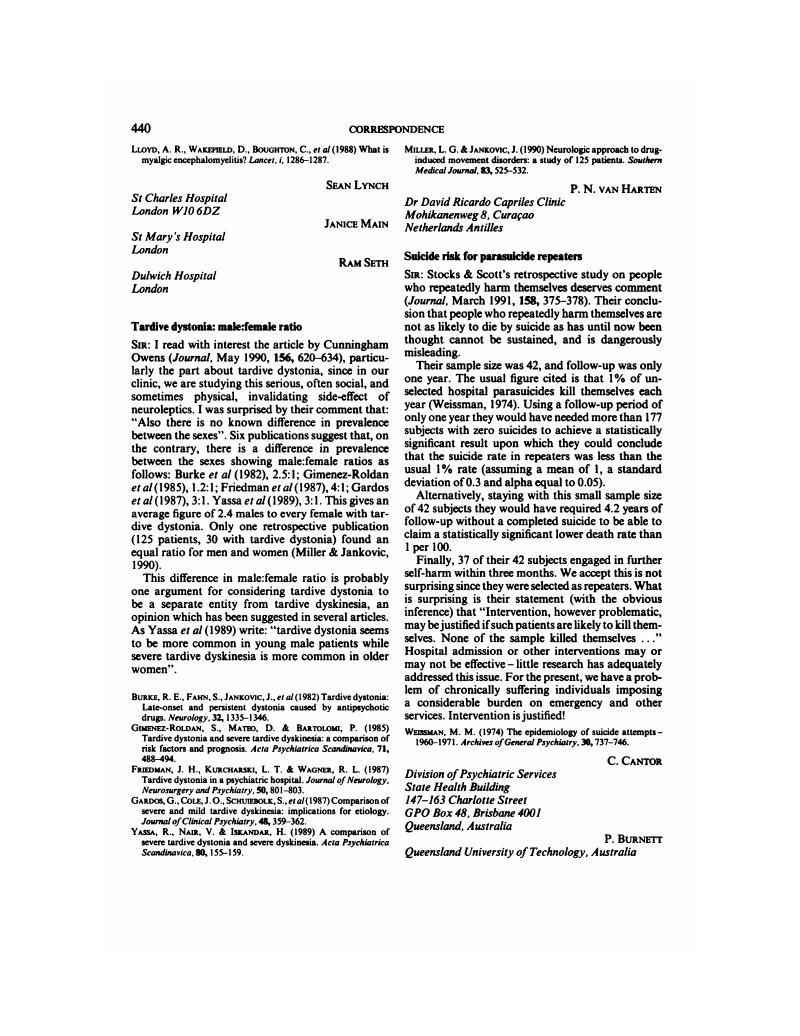Crossref Citations
This article has been cited by the following publications. This list is generated based on data provided by Crossref.
van Harten, P.N.
Matroos, G.E.
Hoek, H.W.
and
Kahn, R.S.
1996.
The prevalence of tardive dystonia, tardive dyskinesia, parkinsonism and akathisia The Curaçao extrapyramidal syndromes study: I.
Schizophrenia Research,
Vol. 19,
Issue. 2-3,
p.
195.
Adityanjee
Aderibigbe, Yekeen A
Jampala, V.Chowdary
and
Mathews, Thomas
1999.
The current status of tardive dystonia.
Biological Psychiatry,
Vol. 45,
Issue. 6,
p.
715.
Hirjak, D.
Kubera, K. M.
Bienentreu, S.
Thomann, P. A.
and
Wolf, R. C.
2019.
Antipsychotikaassoziierte motorische Symptome bei schizophrenen Psychosen – Teil 3.
Der Nervenarzt,
Vol. 90,
Issue. 5,
p.
472.






eLetters
No eLetters have been published for this article.